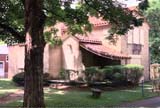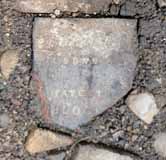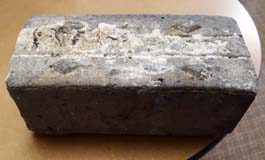Clintonville Electric Building, 3363 N High
Sunday, June 1st, 2025 I’m delighted, and also sad, to learn that the derelict building that once housed Clintonville Electric is now in receivership. Why sad? The business most recently in that location was beloved by Clintonville residents; virtually everyone bought their appliances there. The original business owners were good citizens of their community. All that changed when the business changed hands and in 2004 left Clintonville (and subsequently went bankrupt, cheating half-dozen of its customers). Rumor has it that the property owners–who owned the properties from at least 1936 to the present day– simply declined to either sell or to fix up the buildings, yet kept the city from condemning it. I’ve heard that this building’s roof had a hole in it, and the water coming in caused the ground-level floor to collapse into the basement.
I’m delighted, and also sad, to learn that the derelict building that once housed Clintonville Electric is now in receivership. Why sad? The business most recently in that location was beloved by Clintonville residents; virtually everyone bought their appliances there. The original business owners were good citizens of their community. All that changed when the business changed hands and in 2004 left Clintonville (and subsequently went bankrupt, cheating half-dozen of its customers). Rumor has it that the property owners–who owned the properties from at least 1936 to the present day– simply declined to either sell or to fix up the buildings, yet kept the city from condemning it. I’ve heard that this building’s roof had a hole in it, and the water coming in caused the ground-level floor to collapse into the basement.
The family that owned the Clintonville Electric building owned a handful of other buildings that are so neglected that they affect the neighborhoods in which they are situated. The following Clintonville buildings have been put into receivership:
- 3361-3363 North High Street, Columbus, Ohio, Parcel No. 010-010845-00, shown above, which also includes
- 18 West Brighton;

- 4469 Rosemary Parkway, Columbus, Ohio, Parcel No. 010-086671-00–a lovely house that has also been allowed to go downhill;
- 4994 A North High Street;

These following buildings have also been put into receivership. I know nothing about their condition and some have business occupants unrelated to the landlords.
- 1101 Folkestone Road, Columbus, Ohio, Parcel No. 010-129831-00;
- 4480 Kenny Road, Columbus, Ohio, Parcel No. 010-136767-00;
- 4450-4454 Kenny Road, Columbus, Ohio, Parcel No. 010-129882-00;
- 4460 Kenny Road, Columbus, Ohio, Parcel No. 010-013993-00;
- 5701-5707 Maple Canyon Drive, Columbus, Ohio, Parcel No. 010-115253-00
Some legal documents about the case can be found on the Franklin County Court of Common Pleas. Two are linked here and here.
I’ll write about the businesses that occupied this space, in upcoming months.

 Ann Conner allowed me to see the inside of her
Ann Conner allowed me to see the inside of her 





















